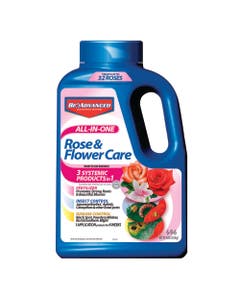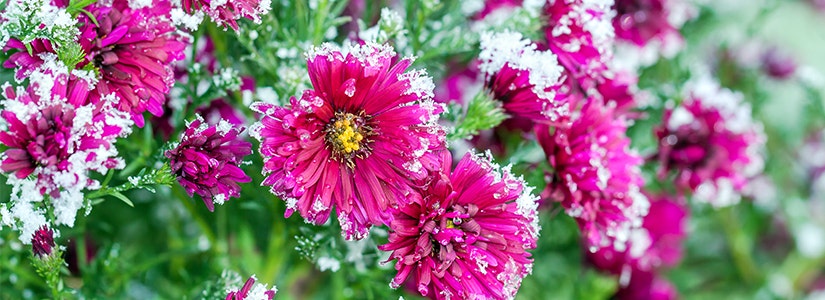

- Home
- Solution Center
- Learn
- Rose & Flower
- Frost Covers & Cold Snap Care
Frost Covers & Cold Snap Care
Whether you fell under the spell of some eye-catching color at the garden center or just wanted to get a jump on the gardening season, planting too early can create a crisis when a cold snap threatens. Helping your seedlings survive the big chill isn't impossible, but it does require some preparation.
In most cases, you can count on makeshift methods to protect plants when the thermometer dips. But for larger plantings, such as a vegetable garden, you'll need to arm yourself ahead of time with the right gadgets to guard plants against frosty mornings.
Know The Limits
In order to understand what steps to take when freeze warnings threaten, you need to know the point at which treasured greenery fades to frost-burned brown. The general rule of thumb is that most plants freeze when temperatures remain at 28°F for five hours.
Of course, there are exceptions to this rule. Seedlings, with their tender new leaves, often give up the ghost when temperatures dip to 32-33°F. Tropical plants have differing low-temperature thresholds. Some keel over when temps fall to 40°F; others crumble at 35°F. Other plants are just hardy by nature and can withstand temperatures as low as 18-20°F. To find the threshold for your plants, search garden books and online resources.
Quick Fixes For Frost Warnings
Pick It Up – The easiest cold-protection scheme is to move plants out of harm's way. This works with seedlings in flats and potted plants. Moving plants under a deck, into a garage or shed, or onto a porch with a roof often offers ample protection.
Count On Water – Water soil just before sundown to raise overnight air temperature around plants as the water evaporates. Fill gallon jugs or buckets with water and place them in the sun during the day. At night, move them near endangered plants. The water will moderate air temperatures; if it freezes, it will release heat. For greatest effect, paint a few water-holding containers black to maximize daytime heating.
Keep Air Moving – Cold, still air does the most damage to plants. Stir a breeze all night with an electric fan to keep frost from forming on plants. Remember to protect electrical connections from moisture.
Cover Plants – Protect plants from all but the hardest freeze (28°F for five hours) by covering them with sheets, towels, blankets, cardboard or a tarp. You can also invert baskets, coolers or any container with a solid bottom over plants. Cover plants before dark to trap warmer air. Ideally, coverings shouldn't touch foliage. Anchor fabric coverings if windy conditions threaten.
In the morning, remove coverings when temperatures rise and frost dissipates. Heat from the sun can build beneath solid coverings, and plants can die from high temperatures.
Break Out Blankets – Keep gardening blankets, often called row covers, on hand. These covers are made from synthetic fibers or plastic in varying thicknesses. Lay row covers directly on plants, or create a tunnel by suspending them over a bed using stakes.
Turn On Lights – An incandescent light bulb generates sufficient heat to raise nearby air temperature enough to protect a plant from the deep freeze. Bulbs must be close to plants (within 2-3 feet) for this technique to work. (Fluorescent bulbs don't generate enough heat for this chore.)
Protect Individual Plants – Install hot caps – rigid plastic containers with venting holes – over individual seedlings at planting time. Hot caps act like cloches (mini greenhouses), but venting holes eliminate the daily chore of placing and removing the covering. Create the equivalent of a hot cap using plastic two-liter bottles or gallon jugs with bottoms cut off and lids removed (but saved). Replace lids at night when cold temperatures swoop through.
A twist on the hot cap idea is a Wall O'Water tepee, which encircles individual plants with a sleeve of water-filled tubes. The water absorbs the sun's heat during the day. At night, as the water slowly freezes, it releases the stored radiant heat of the sun, keeping air inside the tepee frost-free.













